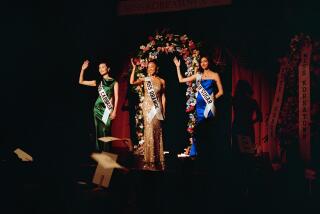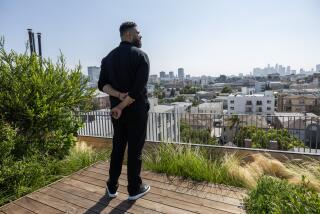Opinion: Koreatown needs a homeless shelter. It also needs city officials to learn from the mistakes of the past
- Share via
“Dowajuseyo.” In Korean, it means “help me.”
A few months ago, I received a call from an L.A. County mental health facility. They had just taken a frail Korean grandmother into their care, and officials couldn’t figure out what to do with her. In her 70s, with a full head of gray hair, the woman probably weighed no more than 85 pounds and had been living on the streets after being evicted from her Koreatown home. She was afraid to be alone in a facility with people who were unable to communicate with her and wanted to be released.
As executive director of the Korean American Coalition, I often find myself in this somewhat fraught position — a bridge between the limited-English-speaking Korean immigrant community and the service providers who have the resources to help them. I spoke with the grandmother’s family, who told me that their financial hardship made their grandmother’s mental illness difficult to manage on their own. I tried again and again to broker some kind of arrangement. Ultimately, we were unable to find a solution. The grandmother was released to the streets. She’s currently among a growing number of Korean American seniors who are experiencing homelessness.
Koreatown is changing.
The area has long been a symbol for the Korean American and immigrant story. It is a place of identity and pride for a community that believes in hard work and sacrifice. But in just the past two years, the city of Los Angeles has approved over 50 new Koreatown development projects — the majority of them hotels and luxury rentals — in what is the densest and arguably the most socioeconomically diverse community in all of California. Though you don’t hear much about it, homelessness is increasing at a rapid rate. I’ve heard stories of a hidden Korean American homeless community that uses 24-hour spas to stay off the streets and sleeps in the pews of local churches.
In 2017, in an effort to figure out just how widespread this problem is, our organization filmed a documentary called “Invisible Neighbors” on the topic. The results were disturbing enough that, this year, we partnered with homelessness experts from the United Way, EPATH, Homeless Health Care, Rand and USC, as well as representatives from L.A. City Council District 10. Our goal was to develop a process to count the invisible ethnic Korean homeless population, identify the causes of its spread and brainstorm possible solutions to the growing issue.
After three months of preparation, this effort was scheduled to launch in May. But everything came to a halt when L.A. announced plans to build a new homeless shelter in Koreatown. It caught everyone off guard, especially longtime residents and small shop owners who were unaware and uninformed of the plan to put a shelter in the heart of Koreatown’s economic corridor, where many business owners are quietly experiencing a financial downturn.
After speaking with various members of the community, I feel confident saying the protests occurred not because we don’t want temporary or supportive housing for those struggling with homelessness. These protests were a direct response to being left out of the process — unable to ask questions and work together with the city to find the best location.
There’s also a deeper context here. For many Koreatown residents, a deep sense of distrust of local government exists, one which stems back to the 1992 L.A. riots, when the Koreatown community was abandoned and left to fend for itself. Over 1,700 businesses were destroyed, leaving residents and small businesses to pick up the pieces and rebuild on their own. Koreatown may look like a hip place to eat and play, but for many, it remains a symbol of the difficult Korean American journey.
City officials have since acknowledged their community outreach should have been better. Mayor Eric Garcetti and Council President Herb Wesson are working with community leaders to educate the public on the details of the project and address concerns.
That’s important, because the truth is that more and more Korean Americans and Koreatown residents need access to homeless services — and this is an opportunity to get them that help.
At first glance, the appearance of a homeless shelter may seem like a threat to our identity and culture of hard work and resilience. But the reality is that our community is changing — and has been for some time. Be it the high cost of living, lack of affordable housing, a rapidly growing elderly population or threats to immigration status, Korean Americans are indeed amongst the homeless. We have a responsibility to take care of them.
Wherever a shelter ends up being located, we must ensure it delivers on its promises — not only for the community, but, more importantly, for the sake of those who will be sleeping there.
“Dowajuseyo.” Help me.
As Angelenos, we need to step up together and answer the call.
Joon Bang is the executive director of the Korean American Coalition and a 2018 Impact-Maker to Watch Award honoree. Follow him on Twitter @joonbang213
Click here for the full Livable City archive »
Follow the Opinion section on Twitter @latimesopinion or Facebook
More to Read
A cure for the common opinion
Get thought-provoking perspectives with our weekly newsletter.
You may occasionally receive promotional content from the Los Angeles Times.










